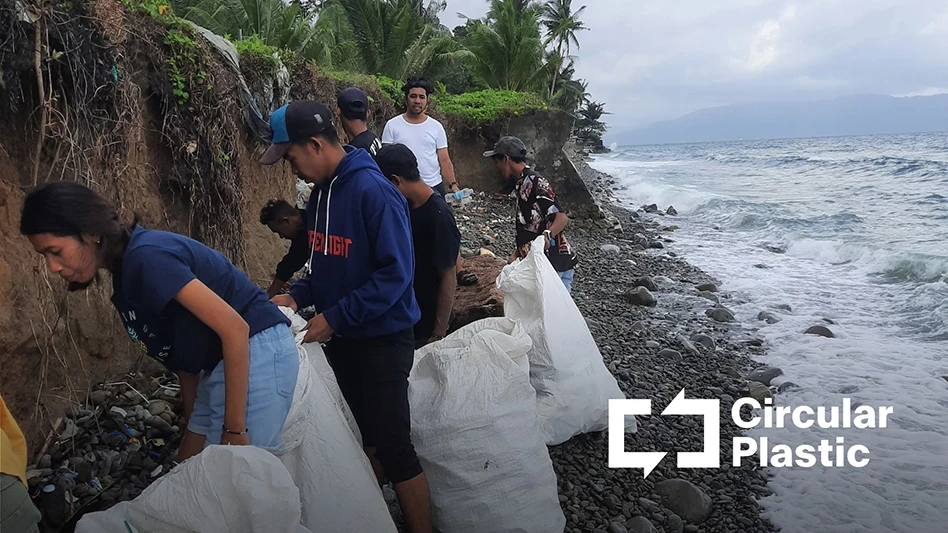_fmt.png)
A Shakopee, Minnesota, material recovery facility (MRF) plans to salvage more bottles with fewer people by upgrading its optical sorter.
Dem-Con Cos. provides a wide variety of services to the Twin Cities area, including commercial and residential single-stream recycling. By upgrading its original optical sorter for plastics, an Aladdin supplied by MSS, Nashville, Tennessee, with technologies from the company’s newer Cirrus PlasticMax, Dem-Con’s management team hopes to save more polyethylene terephthalate (PET) bottles from the landfill.
“For us, one of our [top] challenges is labor,” Dem-Con President Bill Keegan says. “We have a 3 percent unemployment rate in Shakopee where we’re at. We really struggle to get enough people to [work] on the line. We’re able to minimize or reduce our manual labor requirements by doing this.”
Felix Hottenstein, MSS sales director, says the upgrade, which involves replacing the Aladdin’s sensor head, sensor housing, control panel, air-ejector array and catcher hood, will result in more efficient sorting.
The upgrade, which Dem-Con expects to complete by the end of July, will reduce its need for manual sorting by one full-time employee.
Dem-Con installed the Aladdin sorter in 2013.
Keegan says the original sorter was able to identify about 70 percent of the bottles passing over the company’s container-sorting line. With the upgrade, he anticipates that total will grow to about 92 percent.
Hottenstein says that percentage could even be a few points higher.
“It would roughly equal an additional 825 tons of PET captured per year that we weren’t capturing previously,” Keegan says.
Hottenstein points out that, with an inefficient sorter, not only is the recycler losing plastic it can sell, it’s also paying for more material to go to the landfill.
The resolution of the Cirrus Plastic- Max sensors is four times greater than the Aladdin’s, and the technology is sensitive to wavelengths, such as those reflected by PET-glycol products, that are difficult to pick up.
“Before we had a pretty coarse pixel grade to identify the bottles and the different polymers,” Hottenstein says. “Now we have a much, much finer grade to make those detections. That really helps, especially on bottles where there are big labels on them, and we can only see a small portion of the PET, for example.” It’s also helpful on crushed bottles, where the amount of PET visible to the sensor also might be quite small, he says.
The Cirrus PlasticMax’s near-infrared (NIR) cameras differ from other optical sorters in that they sequentially scan all NIR frequencies rather than splitting the light into separate frequencies. Hottenstein says the equipment receives the full intensity of all wavelengths using this approach.
Compared with older optical technologies, the Cirrus PlasticMax detects more wavelengths, allowing more precise material identification
In addition to the new camera technology, Dem-Con’s upgraded sorter will boast improved software with more efficient sorting algorithms, as well as easier access to halogen lamps and air valves.
The upgrade is “fairly significant,” Keegan says. “It’s replacing all the major components of it. You’re having to put in new acceleration belts and everything else. Basically, replacing the vision system and air jets and valves.
“The new technology is just a lot better at recognizing and identifying and punching those materials out of the stream,” Keegan adds.
With the upgrade, Dem-Con will retain only the old sorter’s original frame and conveyor, Hottenstein says.
Keegan says Dem-Con processes about 8 million pounds of PET yearly. In addition to PET, it also produces bales of polypropylene and colored and natural high-density polyethylene and separates film and bulky rigid plastic. The company has four optical sorters. The oldest is the one being upgraded. The other three sorters focus on fiber.
“Any state-of-the-art equipment in our industry becomes obsolete in five years,” Keegan says. It might continue to function but not at an optimum level. “The new optical sorter technology is so much better and far superior to what we had back then.”

Explore the June 2019 Plastics Recycling Issue
Check out more from this issue and find your next story to read.
Latest from Recycling Today
- TerraSafe launches plastic-free products following merger with DisSolves
- University of Richmond wins first place in Campus Race to Zero Waste
- Sonoco achieves Pet Sustainability Coalition accreditation
- Eneos, Mitsubishi Chemical complete chemical recycling facility
- Clean Vision breaks ground on West Virginia pyrolysis facility
- Northeast Recycling LLC buys Mass Green Disposal Services LLC
- Otsego Refuse Center partners with NexTrex to tackle plastic waste
- Avient additives improve quality of recycled content





